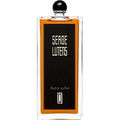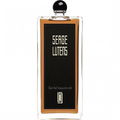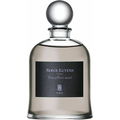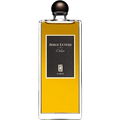"How can one attend the coronation of Satan without ever once having tasted sin? Oud and labdanum come together to create a diabolical and sumptuous veil of indulgence and remorse for a first transgression." is how the Lutens website describes La Couche du Diable, a name that, quite aptly, translates to "The Devil's Bedsheets"
If ever any of the hyperbole used in the marketing of fragrances was true, it would be here. And if sin had a scent, it would be this. So much so, in fact, that I was, and am, compelled to remark that the 7 deadly sins were bottled Christopher Sheldrake in this scent. And be warned, it truly is a devilish delight, but absolutely not for the faint of heart, or the novice nose. And embody them, it does.
Pride; Wearing this fragrance brings about a change in the way one carries themselves, almost unconsciously. One smells regal, untouchable and proud. Almost as if "above" those around them.
Greed; A spray, perhaps two, but no more. Every drop, something precious and rare, not for mere mortals, but only for those that have dined with Lucifer in the fires of hades.
Envy; An abstract thought, and perhaps one difficult to articulate, but the feeling evoked whilst wearing this, is one that is missed in a manner almost cruel after the fact, as if the person adorned by this fragrance is another version of the self, unbothered by the opinions of the crowd, instead choosing to care only about luxury and indulgence. And it is that feeling that one is envious of.
Gluttony; The fragrance itself is gluttonous in the extreme, filled with precious material, every waft a rich, warm and opulent aroma, the distinct smells of luxury moving through it.
Wrath; As the color suggests, this fragrance is anything but kind. Nay, it is angry, like the fires from whence it's been inspired. It is the color of rage...of passion.
Sloth; As bright as the it burns, it is also a test of patience. It is slow to develop, to reveal its secrets and hidden pleasures. It is languid and ever present, savoring every sin as you indulge.
Lust; The sin all are familiar with, and that requires no further explanation. Anyone who smells it, will understand immediately.
Now my own rambling hyperbole aside, I must move on to how the scent smells, more than what it evokes, although for me, the latter is often more important than the former.
La Couche du Diable is opens with a cinnamon-boozy accord, with a citruses going through it, lasting for a good while, as the fragrance evolves, bringing with it a metallic, almost blood like tang, as the amber, labdanum and woods begin to take center stage, turning it warmer and more austere. The oud in this fragrance is something I can barely detect, except to say it smells, somewhere in its evolution, like warm skin. There are no discernable Top, Heart or Base notes to me, instead it flits and evolves from one sin to another, staying true to its amber-spiced core, with notes of flowers, citrus fruits and woods coming and going as they please. It toes the line, almost crossing into middle-eastern perfumery, but remaining firmly planted within the west.
This scent is best suited for fall and winter, and you wear it for yourself, since it is unlikely to garner many compliments, especially from the masses, that prefer the blue fragrances to anything even remotely creative. The longevity is excellent, but it stays close to the skin, which I believe is quite appropriate, since only the "chosen" will get to smell it. And smell it you must, not only to experience truly daring perfumery, but also to understand the plethora of feelings this concoction evokes.
To summarize, dark, indulgent, and sinful. Sweet and spicy. Unique in the extreme. Stunning.







 Cistus
Cistus Oud
Oud













 Zerkalo
Zerkalo TheDunkPapa
TheDunkPapa Cumulnimbus
Cumulnimbus DJSaunter
DJSaunter Saradonin
Saradonin Frankcrummit
Frankcrummit AngeloMani
AngeloMani Katzevogel
Katzevogel NicheOnly
NicheOnly






















